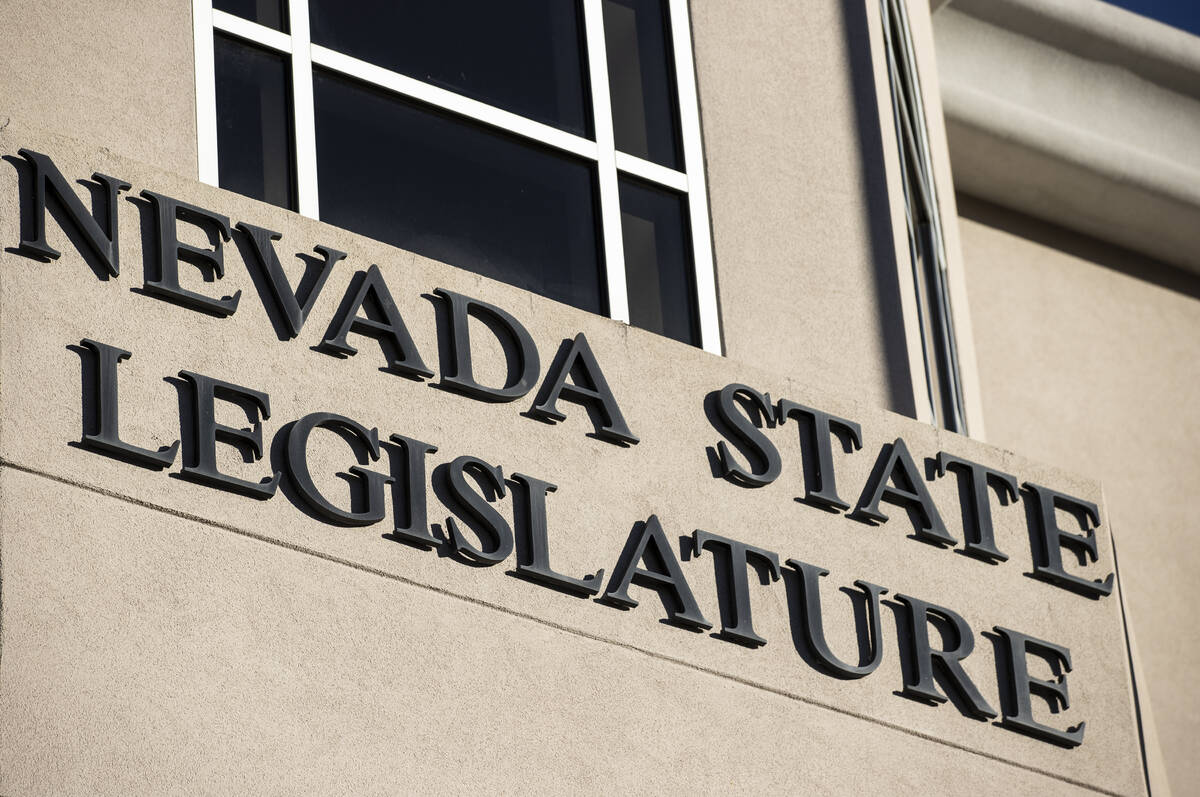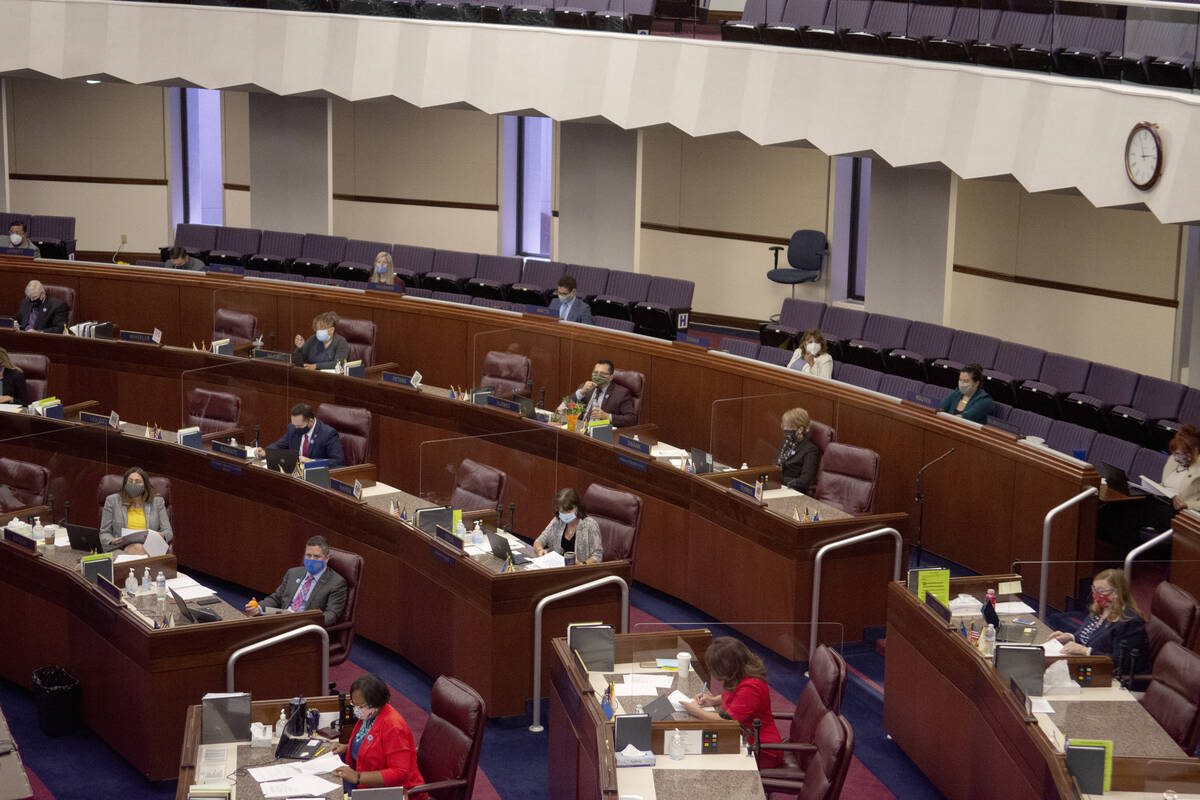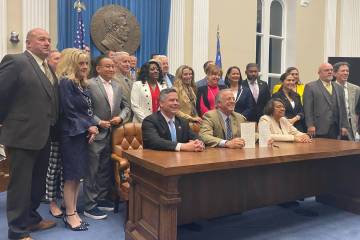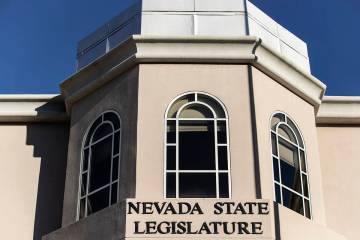STEVE SEBELIUS: Redistricting a perfect example of ram and jam
You want to know why Nevada’s Democrats just passed a redistricting plan that could see them reach a supermajority in the Legislature?
Because they could.
Redistricting is the most nakedly political act that any elected official ever engages in, and like most things involving “naked” and “elected official,” you really don’t want to see what that looks like up close.
Democrats rammed and jammed their plan through with only minor tweaks despite howls of objections from Republicans, progressives and minority community advocates. Even the dean of the Nevada congressional delegation — Rep. Dina Titus — was treated like a common City Hall gadfly, her objections ignored.
In their defense, Democrats had a long road before 2021. Before Steve Sisolak, their last governor was Bob Miller, who left office in early 1999. They suffered under two years of Republican dominance in 2014. And they’ve fallen just short of supermajority status and lost some key votes as a result.
So with a new Democratic governor and Democratic majorities in both houses, the party wasn’t going to lose their shot. They came to Carson City, put their heads down and passed the plans they were going to pass all along.
Because they could.
Many people accuse the Nevada Legislature of plodding, wasting time and then rushing to finish like high schoolers the day before the big project is due. But when they really want something — say, tax breaks for billion-dollar companies or a plan that could see them rule Nevada politics for a decade — well, they can be downright efficient.
And that really irked Nevada Republicans.
GOP lawmakers demanded to ask questions of the people who actually drew the maps but were frustratingly told it was “the caucus.” No individual members of “the caucus” ever stepped forward to claim responsibility. But let’s be honest, that cross-examination would probably have been fruitless.
SENATOR: So why did you take a district with a 1.3-point advantage for Democrats and make it 6.6-point advantage for Democrats?
CAUCUS: Because we can.
Now, if Republicans had a majority and the Governor’s Mansion, they’d undoubtedly be doing the exact same thing, and Democrats would be whining the exact same whines. We know because when Republicans briefly controlled the Legislature, they did some ramming and jamming of their own.
Harder to explain for the Democrats is ignoring members of minority groups, including the Latino community, who expressed dismay at how the new 1st Congressional District now marries parts of the Latino community with Henderson and Boulder City to the south. Those areas have about as much in common as I do with the vegan hipster community.
Democrats said growth meant that the 1st District had to grow, but nothing said it had to grow in such a bizarre way. Some even saw old feuds in the maps’ lines: Titus has never been a favorite of former U.S. Sen. Harry Reid, whose influence over the Democratic-party-in-exile is still strong. So cutting Titus’ Democratic majority to benefit fellow Democrats Steven Horsford and Susie Lee had political overtones. (And drawing her district office at Las Vegas City Hall into the neighboring 4th District? Probably just a coincidence.)
In their defense, Democrats tout the fact that now all three congressional districts have majority non-white populations, as do 29 out of 63 legislative seats (up from just seven under the current plan).
But members of the Latino community clearly wanted a better chance in at least one district, and they made their concerns known. Democrats approved the maps anyway. (One Latino lawmaker — Assemblyman Edgar Flores, D-Las Vegas, voted against the final plan but immediately went into witness protection and has not been seen or heard from since.)
Now that the special session is over, it’s time for the special lawsuits. Or at least that’s what some Republicans were threatening. The trouble is, attacking the maps is legally difficult. The U.S. Supreme Court has ruled that partisan redistricting is generally a political question. Lawsuits can proceed under state law, but in Nevada, there are hardly any laws governing redistricting.
The most members of the GOP can hope for in court is to finally get the mysterious “caucus” people who actually drew the maps under oath to ask them why they drew the maps the way they did. But the testimony under oath won’t deviate very much from the unmistakable silent message broadcast clearly and repeatedly during the special session:
“Because we can.”
Contact Steve Sebelius at SSebelius@reviewjournal.com. Follow @SteveSebelius on Twitter.
























